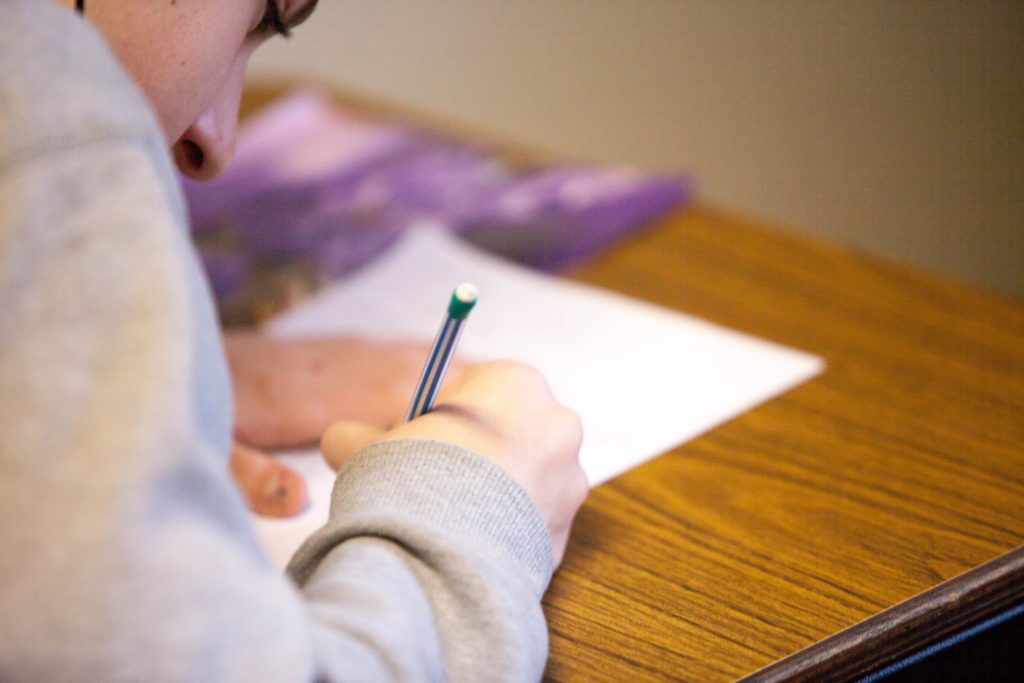If you’re planning on studying in Australia, you probably already know that most international students need to pass an English test before applying. Universities and other educational institutions usually ask for a certain score on an English test, as does the Department of Home Affairs when assessing your visa application. There are a lot of different ways to test your English skills, so we’ve broken it all down for you here.
Who needs an English test score?
There are some students who do not need an English test for their visa application. The most common exemption is if you’re only planning on taking an accredited English Language Intensive Course for Overseas Students (ELICOS), which is the Australian version of English language courses like EFL (English as a Foreign Language) or ESL (English as a Second Language).
According to the Department of Home Affairs, you are exempt from the English language requirement if:
- You are a citizen and hold a passport from the UK, USA, Canada, NZ or Republic of Ireland
- You are an applicant who is a Foreign Affairs or Defence sponsored student or a Secondary Exchange student (AASES)
- You are enrolled in a principal course of study that is a registered school course, a standalone ELICOS, a course registered to be delivered in a language other than English, or a registered post-graduate research course
- You have completed at least five years’ study in English in one or more of the following countries: Australia, UK, USA, Canada, New Zealand, South Africa, or the Republic of Ireland
- In the two years before applying for the student visa, you completed, in Australia and in the English language, either the Senior Secondary Certificate of Education or a substantial component of a course leading to a qualification from the Australian Qualifications Framework at the Certificate IV or higher level, while you held a student visa
Which test should I take?
If you do need to take a test, the IELTS, PTE, TOEFL, CAE and OET are all valid ways of assessing your English, depending on which institution you are applying to, with different scores needed for each test. There are also different minimum scores if you are enrolled in at least 10 or 20 weeks of an ELICOS before starting your main course, compared with no ELICOS.
Make sure to check with your educational institution before taking the test, as the minimum requirement for the course you are interested in may be higher than that for a student visa. The minimum scores can vary between courses and should be listed on the course page on the university website. All tests must have been completed no more than two years before you apply for your visa.
International English Language Testing System (IELTS)
All universities and colleges in Australia accept the IELTS, as well as the Department of Home Affairs. With more than 1,600 test locations in over 140 countries and territories, there is probably an IELTS test centre near you. The cost to take the IELTS ranges between US$180–240, depending on the test centre. The test can be either computer or paper-based and lasts two hours and 45 minutes, sometimes broken up into two sessions.
There are two types of test: Academic (the one needed for tertiary education) and General Training. The IELTS uses a nine-band scale to measure levels of proficiency, from non-user (band score 1) through to expert (band score 9). The minimum score to be eligible for a student visa is 5.5 (or 5.0 with 1o weeks ELICOS, 4.5 with 20 weeks ELICOS).
Pearson Test of English Academic (PTE Academic)
PTE Academic is widely accepted by Australian educational institutions and for your visa application. PTE Academic offers testing in more than 250 test centres in over 50 countries. Some students prefer it to other tests because results are available within five days. The cost varies by country but generally, the range is between US$150–$210. The test lasts around three hours in a single session and computers are used to grade all test responses.
PTE Academic is scored on a scale from 10–90. The minimum score to be eligible for a student visa is 42 (or 36 with 1o weeks ELICOS, 30 with 20 weeks ELICOS).
Test of English as a Foreign Language: Internet Based (TOEFL iBT)
The TOEFL iBT is also accepted by all major Australian educational institutions and for your visa application. (The Department of Home Affairs no longer accepts the paper version of the TOEFL, only the iBT which is completed online.) The TOEFL iBT test is offered more than 50 times a year at test centres around the world and lasts around three hours. The test fee can range from US$160–250.
Each of the four sections of the IELTS is scored out of 30, for a total score out of 120. The minimum score to be eligible for a student visa is 46 (or 35 with 1o weeks ELICOS, 32 with 20 weeks ELICOS).
Cambridge English: Advanced (CAE)
The Cambridge English: Advanced (CAE) test, also known as C1 Advanced, is accepted by all major Australian educational institutions and for your visa. It is offered every month at over 2,800 test centres in 130 countries around the world. The CAE can be computer or paper-based and takes around four hours. Fees are set by each test centre, but it generally costs around US$150–$200.
The C1 Advanced test is scored between 180–199. The minimum score to be eligible for a student visa is 162 (154 with 1o weeks ELICOS, 147 with 20 weeks ELICOS).
Occupational English Test (OET)
OET is specifically required for healthcare professionals and students who need to be able to understand more technical vocabulary. It is used by the Department of Home Affairs, as well as most educational institutions that offer health-related courses. OET is available at more than 130 venues in 40 countries, with 14 test dates per year. OET lasts around three hours and costs around US$400 globally.
OET is graded from A to E, and you must have at least a B for each test component to be eligible for a student visa.
How can I prepare for the test?
All these tests aim to measure your level of English across reading, writing, listening and speaking. If you have already taken some classes in English, the best way to practise is by talking to friends or family in English whenever you can. Watching TV and movies in English, as well as listening to music, will help reinforce your vocabulary and pronunciation.
If you want to prepare for the format of a specific test, there are some helpful apps and websites you can check out. APEUni is an app that helps students prepare for the PTE. It allows you to rank against others that are using the app. You can also see and hear other people’s entries in the app, so if someone gets a perfect score on an exercise, you can listen to them and see how they did it.
For the IELTS, there are resources like the IELTS Prep App and IELTS Word Power designed by the British Council, and the TOEFL Preparation app for the TOEFL. Cambridge also offers free online practice tests for the CAE. The OET Listening Test app is a good way to get used to the kinds of questions you will hear in the test.





